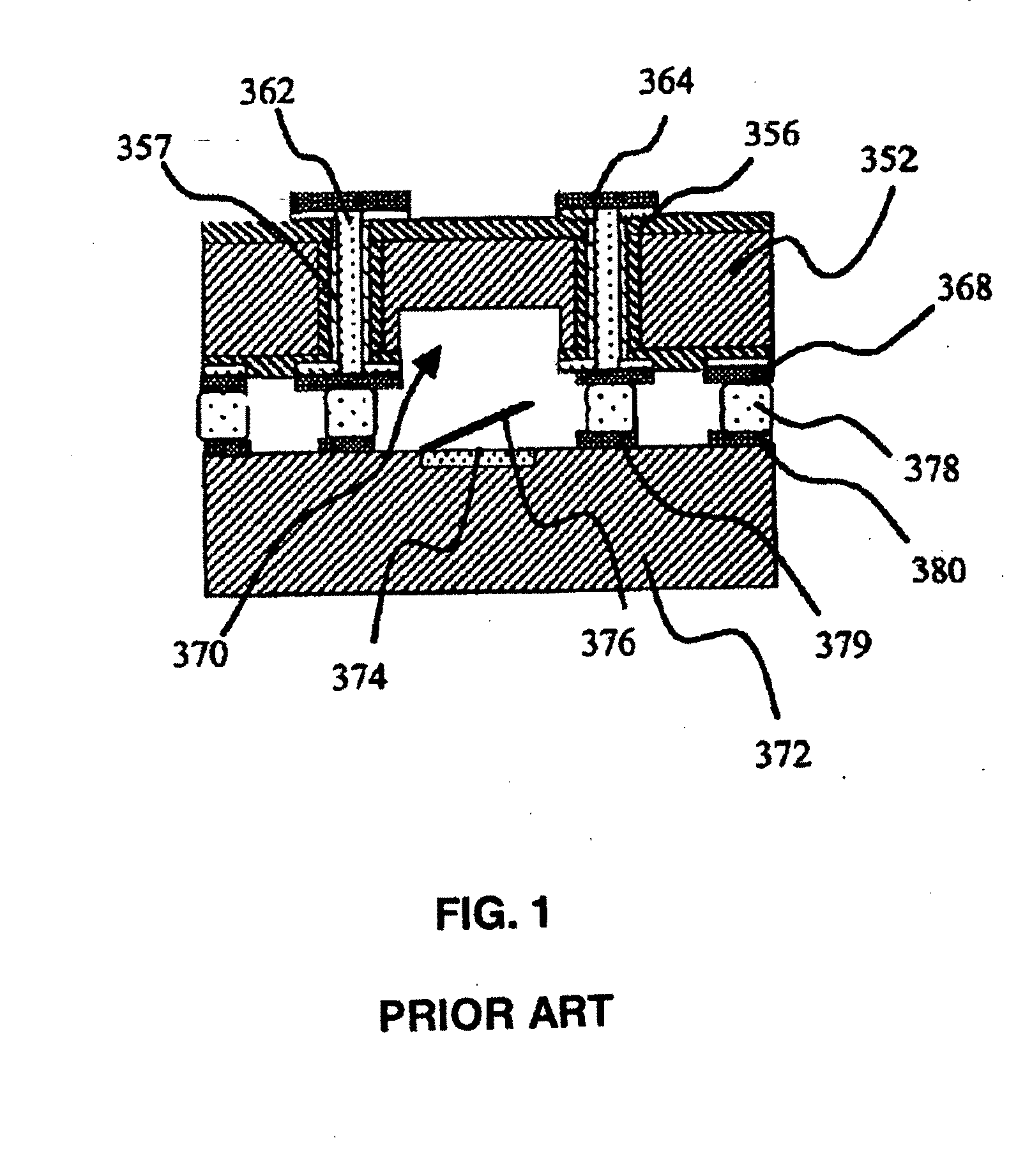Infinitely Stackable Interconnect Device and Method
a technology of interconnect devices and dice, which is applied in the direction of semiconductor devices, semiconductor/solid-state device details, electrical devices, etc., can solve the problems of difficulty and time-consuming steps, the difficulty of completing individual devices in chip form, and the inability to generalize the method allowing for unlimited number of dice to be stacked to form a complete system
- Summary
- Abstract
- Description
- Claims
- Application Information
AI Technical Summary
Benefits of technology
Problems solved by technology
Method used
Image
Examples
first embodiment
[0073]In the present invention, a multi-functional capping chip 20 is bonded to a device wafer 10 as shown in FIG. 2. A typical integrated circuit device wafer 10 may be connected by a multi-functional capping chip 20 to achieve redistribution of interconnection. This embodiment is advantageously employed when it is necessary to connect between two integrated circuit devices which do not have the same locations of bonding pads. Interconnection runners 28 on a first surface 21 of capping wafer 20 and interconnection runners 32 on a second surface 22 of multi-functional capping chip 20 are included to enable offsetting of bumps on first surface 21 from those on second surface 22.
[0074]In a second embodiment of the invention, a multi-functional capping chip 20 is bonded to a device wafer 10 as shown in FIG. 3. A sealing ring 15 may be included in order to hermetically or non-hermetically seal the integrated circuit portion from the environment. As in the first embodiment, this embodime...
sixth embodiment
[0078]In the invention, a multi-functional capping chip 20 is bonded to a device wafer 10 as shown in FIG. 7. As in the previous embodiments, a cavity 35 is included in order to provide appropriate relief for a moveable device, or to enclose biological, chemical or other materials; a sealing ring 15 may be included in order to hermetically seal the integrated circuit portion from the environment; an optical or fluidic via 40 is included; and active gettering materials 80 are also enclosed within cavity 35. In addition, optical element 45 is included in order to both control the direction and behavior of light rays passing through the multi-functional capping chip 20 and to hermetically seal optical and fluidic via 40. Optical element 45 may optionally be attached by adhesive layer 46.
seventh embodiment
[0079]In the invention, a multi-functional capping chip 20 is bonded to a device wafer 10 as shown in FIG. 8. As in the previous embodiments, a cavity 35 is included in order to provide appropriate relief for a moveable device, or to enclose biological, chemical or other materials; a sealing ring 15 may optionally be included in order to hermetically seal integrated circuit portion from the environment; an optical or fluidic via 40 is included; and active gettering materials 80 may optionally be enclosed within cavity 35. In addition, optical element 45 may be included in order to both control the direction and behavior of light rays passing through the multi-functional capping chip and to hermetically seal optical and fluidic via 40. In this embodiment, device wafer 10 is further prepared to have through substrate vias. Through substrate vias 60 are prepared, along with backside interconnection runners 72 and solder bumps 70. This embodiment is advantageously employed when it is ne...
PUM
 Login to View More
Login to View More Abstract
Description
Claims
Application Information
 Login to View More
Login to View More - R&D Engineer
- R&D Manager
- IP Professional
- Industry Leading Data Capabilities
- Powerful AI technology
- Patent DNA Extraction
Browse by: Latest US Patents, China's latest patents, Technical Efficacy Thesaurus, Application Domain, Technology Topic, Popular Technical Reports.
© 2024 PatSnap. All rights reserved.Legal|Privacy policy|Modern Slavery Act Transparency Statement|Sitemap|About US| Contact US: help@patsnap.com










